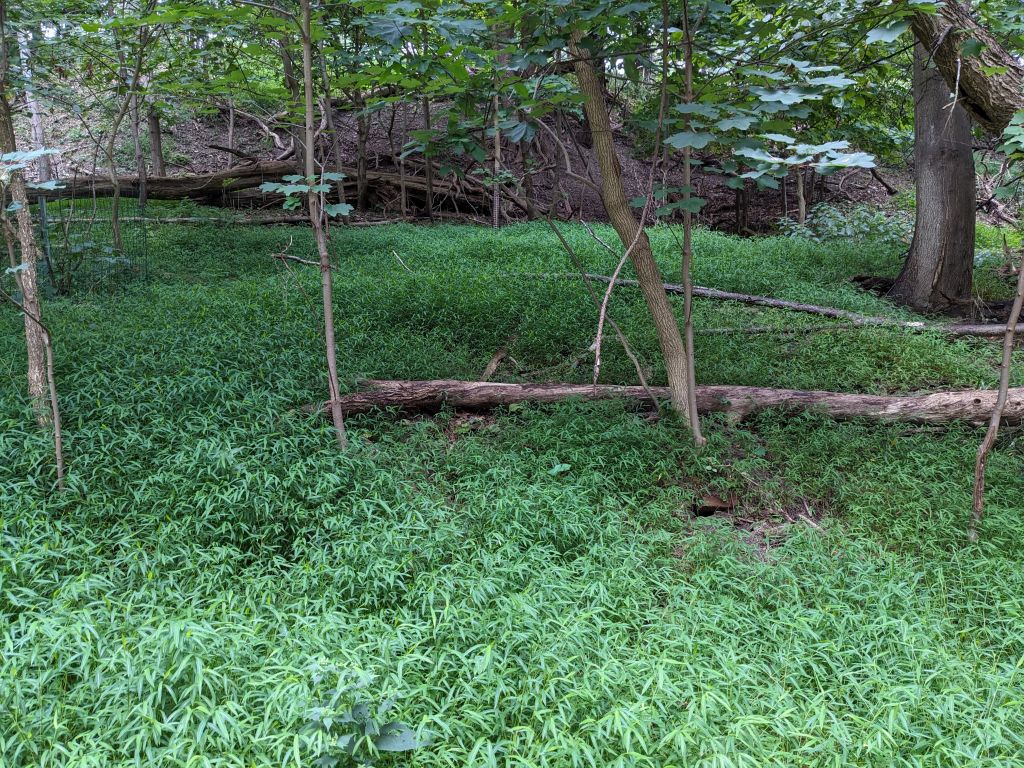
25 August 2024
At this time of year the woods in southwestern Pennsylvania often look as if gardeners have removed all the underbrush and left a thick carpet of grass on the forest floor. The “gardeners” are overabundant white-tailed deer who selectively eat their favorite foods and leave behind invasive Japanese stiltgrass (Microstegium vimineum).
Japanese stiltgrass came to the U.S. in packing crates in the early 1900s as padding to protect porcelain shipped from China. Of course we threw it out when we unpacked the crates. It took root and was discovered in Tennesse in 1919. More than 100 years later it blankets much of the eastern U.S.
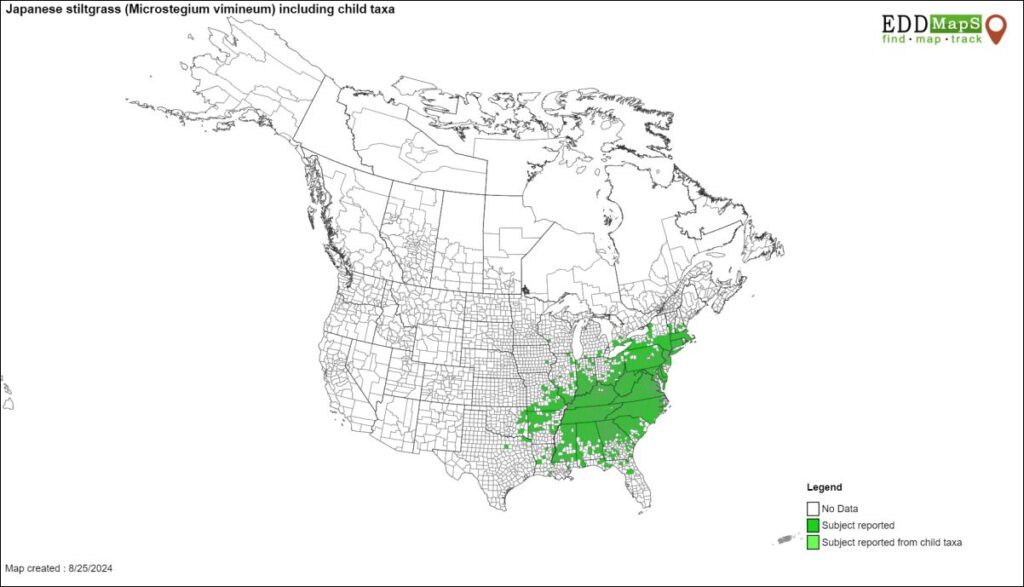
Japanese stiltgrass is easy to identify because it has a shiny midrib (topside) and the midrib is not in the middle of the leaf (underside).
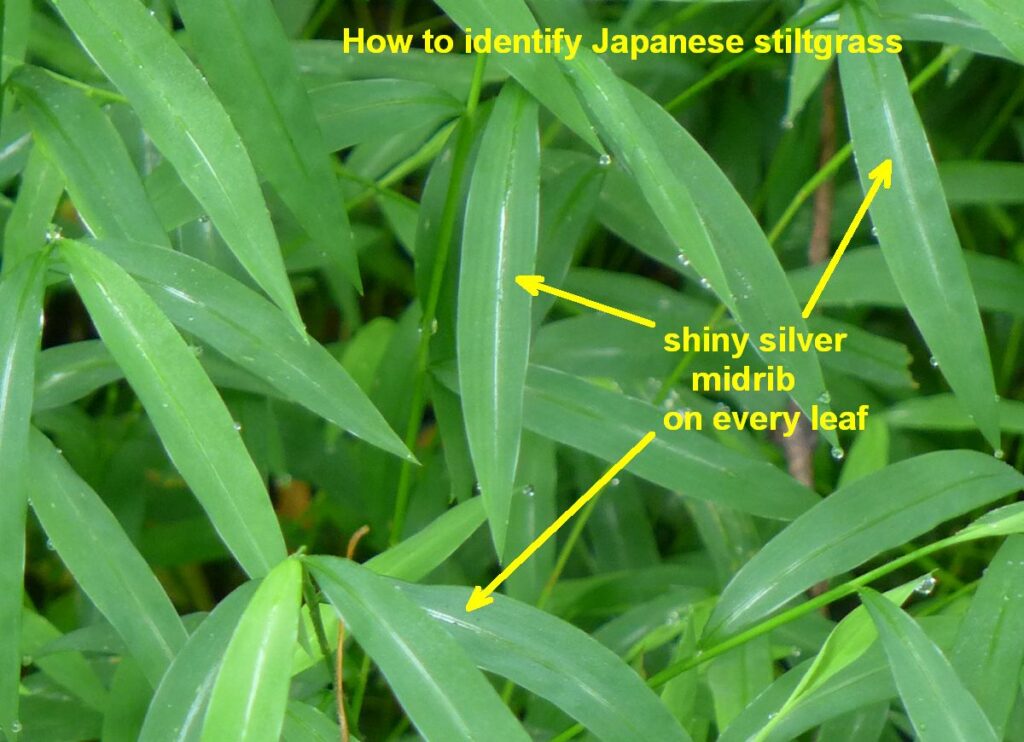
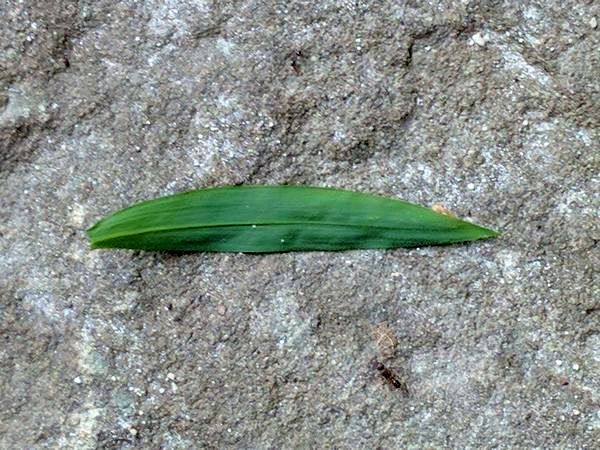
Amazing as it seems, Japanese stiltgrass is an annual that dies every winter and grows back from seed the next spring. Its thick green carpet in summer shades out native species.
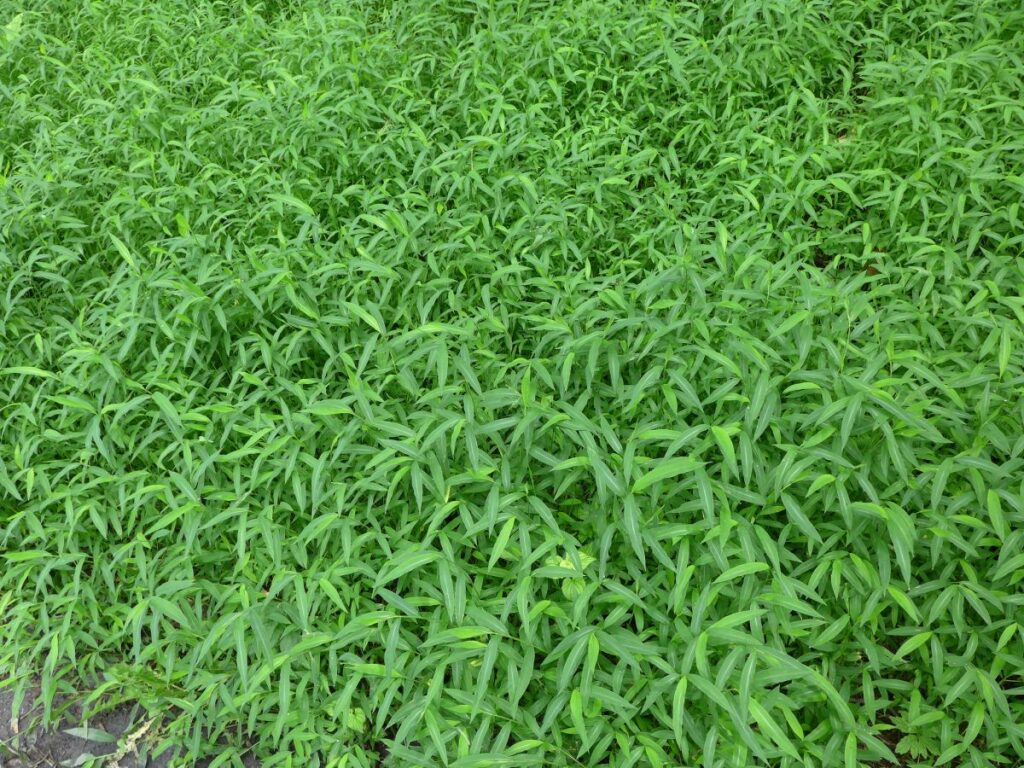
After it goes to seed in early fall it dies and becomes a brown drape over the landscape in winter. This gives it the alternate common name of “Nepalese browntop.”
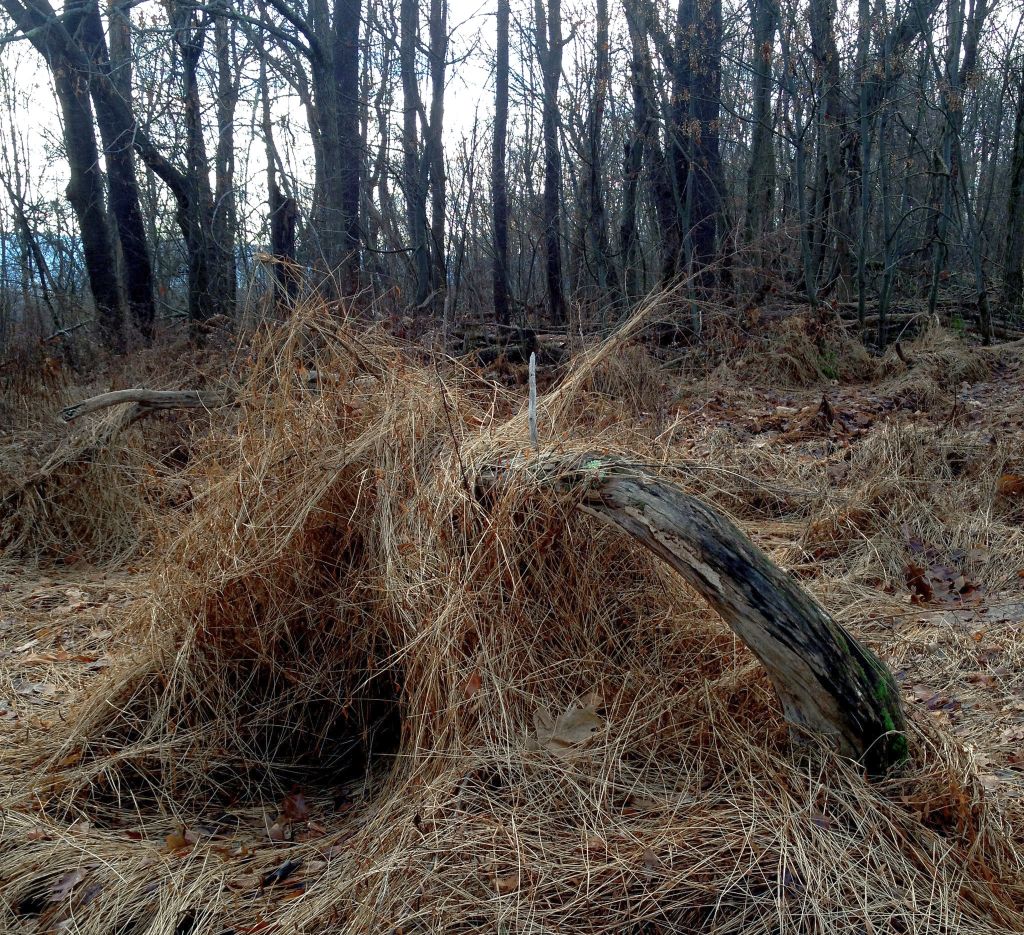
Japanese stiltgrass comes back thickly every year because it drops so much seed in the soil. It’s possible to get rid of it … eventually .. through hand pulling or goats. Pittsburgh Parks Conservancy is using both techniques in Hays Woods this year.
If you have Japanese stiltgrass in your yard, Penn State Extension has these practical remedies for removing it.
Watch this video for more identification clues.